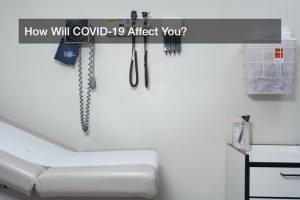Safety Concerns Could Hinder Growth in the Indian Pharmaceutical Market

 After enduring several different challenges and obstacles throughout 2013, the Indian pharmaceutical industry started 2014 on a high note. According to data compiled by drug researcher IMS Health India, the market posted 11.3% growth in the month of January as compared to the year before. Over the last three months as a whole, it has posted 12.2% growth.
After enduring several different challenges and obstacles throughout 2013, the Indian pharmaceutical industry started 2014 on a high note. According to data compiled by drug researcher IMS Health India, the market posted 11.3% growth in the month of January as compared to the year before. Over the last three months as a whole, it has posted 12.2% growth.
Kumar Hindija, Senior Director of Strategy Planning and Business Development at IMS Health India said, “The above normal winter conditions prevailing across the country continued to drive growth in January, also. Acute therapies which contribute to over 70% of the market registered a robust double-digit growth, for the third consecutive month.”
Expectations for the year as a whole suggest that the industry should grow another 10 to 13%. However, safety concerns from the United States might significantly limit success in the coming year. India, the second-leading exporter of over-the-counter and prescription drugs to the U.S., is receiving increased scrutiny over safety concerns, falsified drug tests, and the sale of fake medicines. Some 40% over-the-counter and generic prescription drugs Americans consume are shipped from India.
Food and Drug Administration Commissioner Dr. Margaret Hamburg is meeting with Indian pharmaceutical executives and officials this week in the apparent effort to increase precautions and alleviate security concerns. However, there is some debate about whether or not Indian manufacturers will be able to adhere to more rigorous standards.
India’s premier drug regulator, G.N. Singh, said U.S. standards would simply be too cumbersome for them.
“If I have to follow U.S. standards in inspecting facilities supplying to the Indian market,” he said, “we will have to shut almost all of those.”
Satish Reddy, President of the Indian Pharmaceutical Alliance believes that more regulations are needed, but the problems are not necessarily as poor as indicated. “More rigorous enforcement is needed, for sure, but this impression that India is overrun with counterfeits is unjustified,” he said.
Regardless of how extensive the problems may or may not be, most everyone seems to agree that there needs to be increased scrutiny. Without it, there is less pressure for manufacturers to make sure that their drugs are being produced and transported safely.
“If there were no cops around, would everyone drive the speed limit?” Heather Bresch, chief executive of Mylan, which has plants in both the U.S. and India, asked. “You get careless, start taking risks. Our government has enabled this.”
In addition to making sure factories and equipment meet new standards, pharmaceutical manufacturers might also have to update their packaging infrastructure, since proper packaging is vital for making sure drugs are safe and effective when they are consumed.
“Maintaining high quality standards in dealing with pharmaceuticals and their packaging are of the utmost importance in this day and age. As new and novel therapies are developed, the assurance of quality and protection of these molecules, and ultimately the end user (the patient), is paramount in importance to any other driver in our daily operations,” said Eric Bergmann, Senior Director of Operations for Sharp Clinical Services.
Packaging is so important, in fact, that the pharmaceutical packaging industry is expected to swell from $4.5 billion in 2013 to roughly $6.2 billion in 2018. Increased safety and regulatory procedures in India might play a hand in that growth.
Sources:
http://www.upi.com/Health_News/2014/02/15/US-voices-concern-over-safety-of-Indian-pharmaceuticals/UPI-46841392489648/
http://www.packagingnews.co.uk/news/pharmaceutical-packaging-market-to-reach-6-2bn-by-2018/
http://www.nytimes.com/2014/02/15/world/asia/medicines-made-in-india-set-off-safety-worries.html
http://www.livemint.com/Industry/B34uFIUIXgi6BKJ2I6CuWJ/Indian-pharma-sales-up-113-in-January.html







